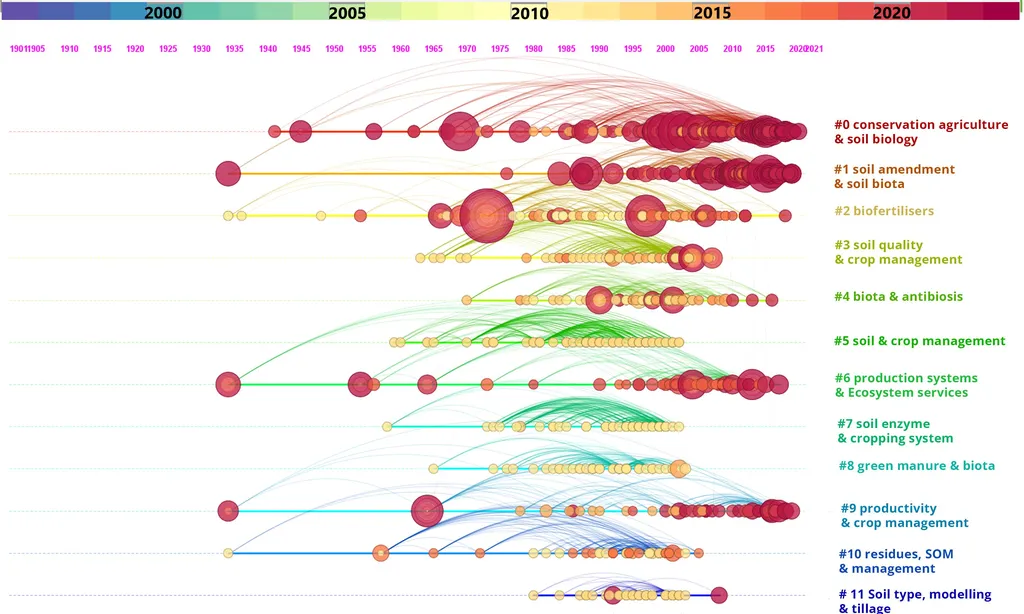In the quest for sustainable agriculture and environmental resilience, soil health has emerged as a critical focal point. A recent bibliometric analysis published in *Discover Soil* (which translates to *Exploring Soil* in English) sheds light on the evolving landscape of soil health and sustainability research, offering valuable insights for practitioners, academics, and policymakers alike. Led by independent researcher Gouri Sankar Bhunia, the study traces the trajectory of scholarly contributions over the past 34 years, highlighting key trends, influential authors, and thematic clusters that have shaped the field.
Using Dimensions-AI as the primary database and VOSviewer for network visualization, Bhunia’s analysis reveals a significant increase in scientific output, particularly after the year 2000. This surge in research activity underscores the growing recognition of soil health as a cornerstone of food security, carbon sequestration, and ecosystem stability. “The data shows a clear shift in focus towards regenerative agriculture, soil microbiome, climate resilience, and precision agriculture,” Bhunia notes. “These areas have seen particularly rapid growth, reflecting their importance in addressing contemporary environmental challenges.”
The study identifies several major thematic keywords that have dominated the discourse on soil health and sustainability. Among these are Sustainable Soil Management, Soil Quality and Resilience, Regenerative Soil Practices, and Soil Health and Sustainability. These themes not only reflect the current priorities in soil research but also point to the interdisciplinary nature of the field, with connections to remote sensing, sustainable science, and artificial intelligence (AI) in soil monitoring.
One of the most compelling aspects of the analysis is the citation network, which reveals the primary aggregating publications and cooperative research networks driving innovation in soil sustainability. “Understanding these networks is crucial for identifying knowledge gaps and potential future research directions,” Bhunia explains. “It provides a roadmap for scaling up conservation tactics in sustainable land management through improved soil health.”
The implications of this research extend beyond academia, with significant commercial impacts for the energy sector. As the world grapples with the challenges of climate change and the need for sustainable energy solutions, the insights gleaned from this study could inform the development of more resilient and efficient agricultural practices. This, in turn, could contribute to the production of bioenergy crops and the enhancement of carbon sequestration in soils, offering a dual benefit for both the agricultural and energy sectors.
In conclusion, Bhunia’s bibliometric analysis serves as a valuable strategic tool for those working to advance soil health and sustainability. By providing a comprehensive overview of the field’s evolution and identifying key trends and research networks, the study offers a glimpse into the future of soil research and its potential to shape a more sustainable and resilient world. As Bhunia aptly puts it, “The future of soil health research lies in our ability to collaborate, innovate, and adapt to the challenges that lie ahead.”

